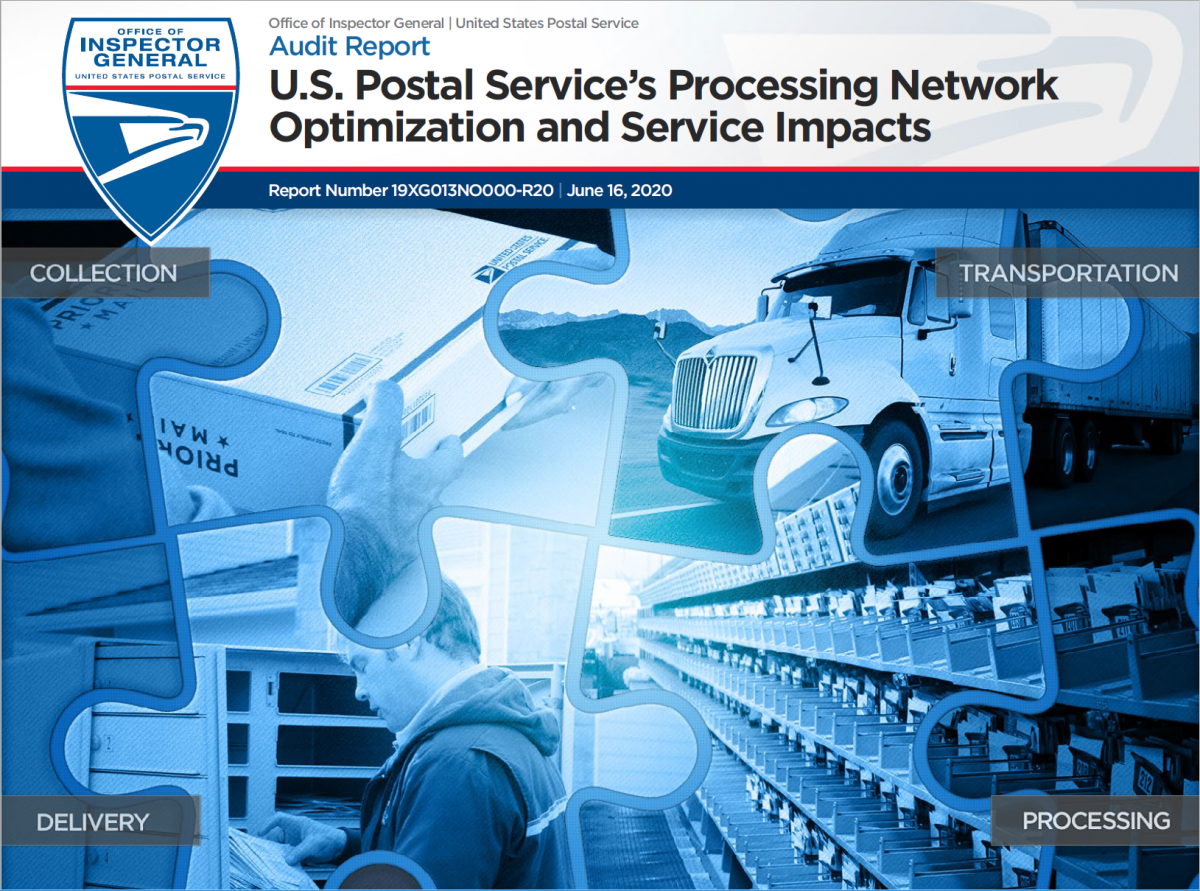Objective
Our objective was to determine if the U.S. Postal Service’s processing network is operating at optimal efficiency and meeting service standards.
Our fieldwork was completed before the President of the United States issued the national emergency declaration concerning the novel Coronavirus disease outbreak (COVID-19) on March 13, 2020. The results of this audit do not reflect process and/or operational changes that may have occurred as a result of the pandemic.
The Postal Service estimates significant revenue declines due to the COVID-19 pandemic and the resulting economic fallout. Therefore, it is vital that the Postal Service focus on its financial health and address causes for costs increasing at a time when mail volumes decreased.
The Postal Service needs effective and productive operations to fulfill its mission of providing prompt, reliable, and affordable mail service to the American public. The Postal Service also has service standards that specify timeliness targets for delivering mail. As part of its five-year strategic plan, the Postal Service’s Optimize Network Platform initiative is responsible for evaluating, right-sizing, and equipping the mail processing infrastructure and transportation networks to increase operating efficiency, reduce costs, and improve reliability.
This is a follow-up audit to the U.S. Postal Service Processing Network Optimization (Report Number NO-AR-19-006, dated September 9, 2019) audit and the Assessment of the U.S. Postal Service’s Service Performance and Costs (Report Number NO-AR-19-008, dated September 17, 2019).
In the prior projects, we found the Postal Service has not decreased processing costs at a rate consistent with the decline in mail volume. As a result, the Postal Service is processing mail with lower productivity for letter, flat, and manual operations. Additionally, even though infrastructure costs have been increasing and volumes are declining, the Postal Service has not met the majority of its service performance targets over the past five years.
This audit was designed to further determine the causes of these operational and service challenges. To do so, we conducted 18 site visits at Processing and Distribution Centers (P&DC) nationwide, with 10 focusing on processing efficiency and eight focusing on service impacts. We observed well performing facilities and those which had performance challenges, and we selected each by analyzing efficiency and service performance metrics for mail processing and transportation operations. In addition, we conducted 24 site visits to delivery units associated with the P&DCs to observe mail processing impacts on delivery and how delays in obtaining collection mail impact mail processing.
Finding
Although we found certain locations with best practices in place to improve efficiency and performance, generally, the Postal Service’s processing network is not operating at optimal efficiency. Additionally, the Postal Service’s drive to meet service performance targets has increased costs and inefficiency due to issues with integrating mail processing, transportation, and delivery operations.
Recommendations
We recommended management:
- Implement best practices identified during site visits to increase operational efficiency and management oversight nationwide.
- Create a program to develop emerging leaders into potential front-line managers and require all acting managers to participate.
- Ensure front-line managers use the RPG to manage mail processing operations.
- When the impacts of COVID-19 begin to subside, develop a plan, with milestones and measurable goals, to increase staff availability, including applying standard operating procedures to address employees out for significant periods of time.
- Develop an automated system to monitor performance of the integration among processing, transportation, and delivery operations.
Read full report
Source: USPS Office of Inspector General

